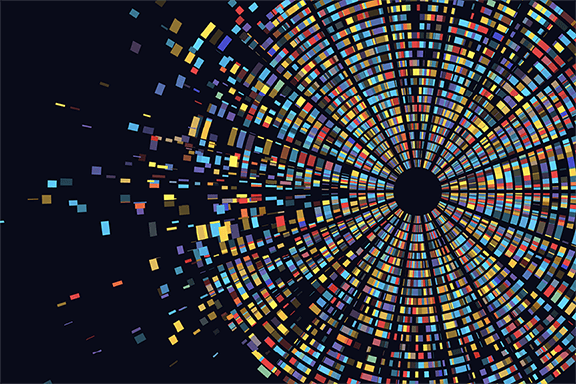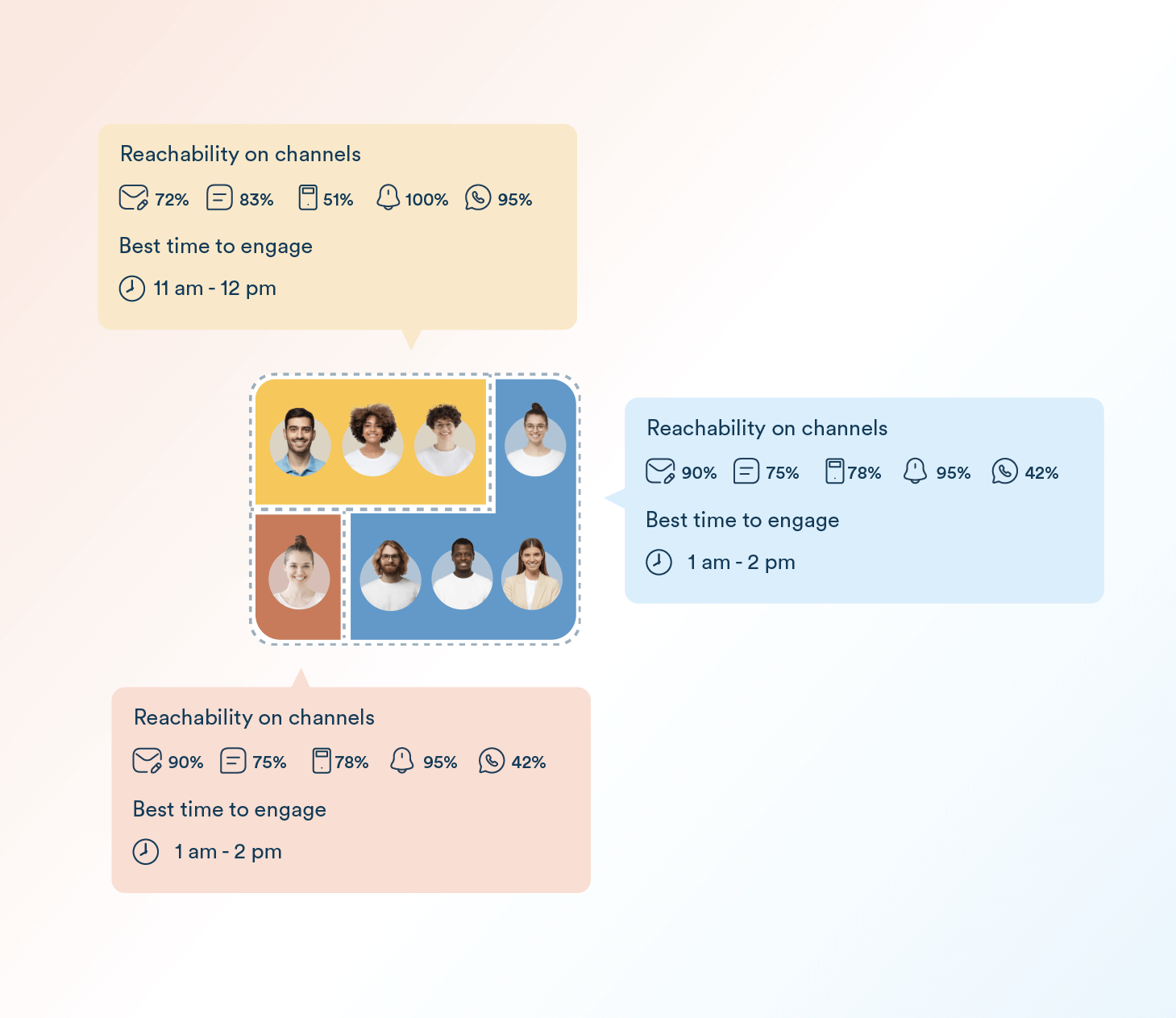Marketers use customer segmentation to identify distinct groups within their audience and tailor their strategies accordingly. With practical insights and actionable steps, this guide will help you master segmentation and apply it effectively to your marketing efforts.
Imagine if every marketing campaign you encountered felt like it was made just for you. That’s the magic of customer segmentation—a powerful strategy that helps businesses divide their customer base into meaningful groups based on shared traits. By carving out these segments, companies can craft personalized messages that truly resonate with their customers. Whether through demographics, behaviors, or other criteria, customer segmentation turns broad audiences into specific targets, making your marketing efforts more precise and effective. This blog will explore how customer segmentation can transform your marketing strategy and deliver remarkable results.
What is Customer Segmentation?
Customer segmentation divides a customer base into distinct groups based on shared characteristics. These segments can be based on demographics, behaviors, or other criteria. In marketing and business, segmentation helps tailor strategies to meet each group’s specific needs, enhancing customer satisfaction and improving overall business performance.
Why is Customer Segmentation Important?
Customer segmentation is like having a finely tuned compass that points directly to your target market. Just as a compass guides explorers through uncharted territories, customer segmentation steers brands toward their most valuable prospects, ensuring precision in their marketing efforts. It’s essential for a multitude of reasons, each one playing a key role in boosting your business’s overall efficiency and effectiveness.
Better Understand Your Customer
Segmentation sharpens your view of customer preferences, behaviors, and needs. Analyzing these segments allows you to uncover trends and patterns that guide product development, customer service improvements, and overall strategy. This deeper understanding helps you anticipate customer needs and stay ahead of market trends.
Next-Level Personalization
Personalized marketing isn’t just a buzzword—it’s a game-changer. Customer segmentation helps you craft messages and offers that truly resonate with specific groups. This personalized touch boosts engagement, strengthens customer relationships, and enhances brand loyalty. Imagine a clothing retailer sending you promotions based on past purchases—suddenly, shopping feels more like a conversation with a friend who knows your style.
Foster a Base of Happy, Loyal Customers
When customers feel understood and valued, their satisfaction and loyalty naturally grow. Segmentation helps you deliver experiences and solutions relevant to each group’s unique needs. This personalized approach builds trust and encourages repeat business, ultimately increasing customer lifetime value.
Increased Efficiency and Profitability
Segmentation is like a well-oiled machine streamlining marketing efforts, cutting down on wasted resources. By zeroing in on high-potential segments, businesses can achieve better results with less effort. For example, a software company might find that small businesses benefit most from its product and focus its sales efforts there.
Simply put, customer segmentation is a powerhouse tool that helps your marketing campaigns hit the mark more often, resulting in higher conversion rates and smarter resource allocation. Plus, you can spot your high-value customers and focus on keeping them happy and loyal.
What is Customer Segmentation Analysis?

Customer segmentation analysis is the process of discovering insights that define specific groups of customers. Marketers and brands use this process to determine which campaigns, offers, or products to promote to different segments.
For example, a retail brand wanting to reactivate lapsed customers might create a segment of customers who have purchased in the past but haven’t visited their online store in the past 60 days. The brand would then analyze this segment to understand their previous purchases, discount preferences, and more. With this information, the marketing team can design an effective campaign to win these customers back.
Similarly, customer segmentation analysis helps companies assess the value of particular segments by examining predicted future value, average order value, loyalty tier distribution, and other factors. This allows businesses to make informed decisions and tailor their strategies for maximum impact.
Customer segmentation analysis peels back the layers of your customer base to reveal distinct groups based on shared characteristics, and there are a variety of tools and techniques that can help you achieve this:
- Data Analytics Software: Tools like Google Analytics, Tableau, and Microsoft Power BI help analyze large datasets to identify patterns and trends.
- Customer Relationship Management (CRM) Systems: Platforms like that store and manage customer data, facilitating segmentation analysis.
- Surveys and Questionnaires: Collecting direct feedback from customers to gain insights into their preferences and behaviors.
- Machine Learning Algorithms: Using algorithms to automatically identify and categorize customer segments based on complex data patterns.
- Customer Engagement Platforms: Comprehensive platforms like Clevertap integrate various marketing channels, like email, social media, and websites, to enhance customer interactions and personalize engagement strategies.
By using these methods, businesses can gain a deeper understanding of their customer base and create hyper-personalized content and strategies that will resonate with their intended audience.
Types of Customer Segmentation Models

Understanding the different types of customer segmentation models can be a game-changer for our marketing strategies. Several popular segmentation methods exist, and some marketers even combine multiple models to achieve their goals.
Regardless of which customer segmentation models are used, the process begins with grouping customers based on specific criteria. This typically results in creating a series of tiers for each segmentation model. Marketers can mix these tiers across different models to create more refined segments. For example, combining the highest tier of an RFM model (recency, frequency, and monetary value) with a low longevity tier creates a segment of highly active, newly acquired customers.
With this in mind, let’s dive into the various models and see how they can help us better understand and engage our audience.
- Demographic segmentation: Demographic segmentation sorts people based on their life stats, including age, gender, income, education, and occupation. A luxury car brand might target high-income individuals, while a toy company focuses on young families.
- Geographic Segmentation: Geographic segmentation divides customers based on their location. This could be as broad as a country or as specific as a neighborhood. For example, a clothing retailer might stock more winter coats in colder regions and swimwear in coastal areas. By understanding where our customers are, we can better meet their local needs and preferences.
- Psychographic Segmentation: Psychographic segmentation digs deeper into the psychological aspects of our customers, taking their lifestyles, values, interests, and personality traits into consideration. Think of it as getting to know what makes them tick. A fitness brand might send one kind of content to health-conscious individuals who value an active lifestyle and a different kind of motivational content to sedentary individuals, inspiring them to start getting healthier with their product.
- Behavioral Segmentation: Behavioral segmentation focuses on how customers interact with our products or services. It includes their purchase history, brand loyalty, usage rates, and other behaviors. For example, a streaming service might offer different subscription plans based on viewing habits. Understanding customer behavior helps you create more relevant and timely offers.
- Technographic Segmentation: Technographic segmentation categorizes customers based on technology usage and preferences. This includes the devices they use, their software preferences, and their overall tech-savviness. Software companies often target tech enthusiasts who are early adopters of new technologies.
- Firmographic Segmentation: Firmographic segmentation divides businesses based on attributes like industry, company size, revenue, and location. It is most often used in B2B marketing. A cloud service provider might create a segment of small to mid-sized businesses in the tech industry to target. This approach enables specialized solutions for different types of businesses.
- Cluster Analysis Segmentation: Cluster analysis is a widely used segmentation technique that groups customers based on similar characteristics or behaviors. This method helps identify patterns within a diverse customer base. Marketers can use algorithms that analyze data to form distinct customer clusters with common traits. Demographics, purchasing habits, and geographic locations are a few of the commonly used data points in this kind of segmentation.
- RFM Segmentation: RFM segmentation is a powerful approach for categorizing customers based on their transaction history. It evaluates three key parameters:
- Recency: How recently a customer made a purchase.
- Frequency: How often a customer makes purchases.
- Monetary: The total monetary value of a customer’s purchases.
By segmenting customers according to RFM, marketers can target high-value, loyal customers differently from occasional buyers, enhancing personalization and engagement.
- Longevity Segmentation: Longevity segmentation focuses on the duration of a customer’s relationship with a brand. It categorizes customers based on their tenure, helping businesses separate loyal, long-term customers from newcomers. This segmentation model is especially valuable for fine-tuning communication and offering deepening customer loyalty.
Customer Segmentation and Machine Learning

Machine learning plays a pivotal role in customer segmentation by enabling businesses to analyze vast amounts of data and identify distinct customer groups. This technology automates the segmentation process, making it more efficient and accurate than traditional methods. Here are some typical machine learning techniques employed for customer segmentation:
- Clustering Algorithms: Methods like K-means, hierarchical clustering, and DBSCAN group customers based on similarities in their data.
- Decision Trees: These models create a tree-like structure to classify customers based on their attributes, making the segmentation easier to interpret.
- Neural Networks: Advanced models that can handle complex and non-linear relationships in customer data to identify hidden patterns.
- Association Rule Learning: Techniques like Apriori and Eclat find associations between different customer behaviors, helping to segment based on purchasing patterns.
- Natural Language Processing (NLP): Used to analyze textual data from customer reviews, social media, and surveys to understand customer sentiment and preferences.
Benefits of Using Machine Learning for Segmentation
Integrating machine learning into customer segmentation offers numerous advantages:
- Efficiency: Automating your customer segmentation process saves valuable time and resources. This allows you to focus on strategy rather than doing manual data analysis.
- Accuracy: Machine learning models can handle large datasets with numerous variables, which means more precise and reliable customer segments.
- Scalability: As businesses grow, machine learning models can easily scale to process increasing amounts of data without compromising performance.
- Predictive Insights: By analyzing historical data, machine learning models can predict future customer behaviors, allowing you to craft proactive marketing strategies.
- Personalization: More accurate segmentation allows for highly personalized marketing campaigns.
In short, machine learning supercharges customer segmentation by making it faster, more accurate, and more scalable, ultimately leading to better returns on your marketing investments.
Want to boost results? Discover which of the 10 best customer segmentation tools is the clear winner.
Customer Segmentation Examples
Customer segmentation is a powerful tool across various industries, helping businesses tailor their marketing strategies to specific groups. Let’s look at some real-world examples to see how different sectors utilize segmentation.
Retail Industry
Customer segmentation is key to understanding diverse shopping behaviors in the retail industry. A clothing retailer might segment customers by age and create targeted campaigns promoting trendy apparel to young adults and more classic styles to older customers. Retailers can also use behavioral segmentation to identify frequent shoppers and offer them loyalty rewards and personalized discounts.
Get inspired by the best customer loyalty program examples from top brands.
Financial Services
Financial services firms like banks and insurance companies use segmentation to offer customized financial products. Banks often segment their customers based on income levels and financial goals. High-income customers might receive personalized wealth management services, while young professionals could receive student loan refinancing options or first-time homebuyer programs. By understanding the unique financial needs of each segment, firms can provide more relevant and valuable services.
Healthcare Sector
Patient segmentation is crucial for delivering personalized care in the healthcare sector. Hospitals and clinics might segment patients based on medical history, age, and geographic location. Elderly patients with chronic conditions might be offered specialized care plans and regular check-ups, whereas younger, healthier individuals could receive wellness and preventive care programs. This approach ensures that each patient receives the appropriate level of care and attention, improving overall health outcomes.
Travel and Hospitality
The travel and hospitality industry leverages segmentation to maximize guest satisfaction. A hotel chain might segment business travelers and offer them amenities such as high-speed internet and meeting facilities, while leisure travelers could receive promotions for spa services and sightseeing tours. By catering to the specific needs of different traveler segments, hotels can deliver a more personalized and enjoyable stay.
E-commerce Platforms
E-commerce platforms use segmentation to optimize their online shopping experience. Online retailers typically segment customers based on browsing behavior and purchase history. Frequent buyers are targeted with exclusive deals and early access to new products, while first-time visitors might receive welcome discounts and product recommendations. Additionally, psychographic segmentation can help identify customers’ interests and values, enabling the platform to create more engaging and relevant marketing content.
Technology Companies
Software providers and tech gadget manufacturers use segmentation to address diverse customer needs. For example, a software company might segment its user base by industry and company size. Small businesses might be offered affordable, easy-to-use solutions, whereas large enterprises could receive customized, scalable software packages.
You Might Like to Read: What is Market Segmentation? Definition, Types & Examples
Customer Segmentation with CleverTap
CleverTap’s advanced customer segmentation capabilities help businesses understand and engage customers more effectively. Using real-time behavioral data, CleverTap identifies distinct customer segments, enabling personalized marketing campaigns that can resonate powerfully with each group.

CleverTap employs a suite of sophisticated tools and technologies to enhance customer segmentation:
- Behavioral Analytics: Tracks user interactions across various touchpoints to create detailed customer profiles, enabling more informed and personalized marketing strategies.
- Real-Time Data Processing: This technology captures and processes data in real time to ensure timely and relevant customer interactions, enhancing the immediacy and relevance of marketing efforts.
- Omnichannel Engagement: Integrates data from multiple channels, providing a holistic view of customer behavior, which aids in creating consistent and cohesive customer experiences.
- Clever.AI: Enhances predictive analytics and personalization by leveraging advanced AI algorithms, leading to more effective segmentation and targeted campaigns.
- TesseractDB: Provides unparalleled data granularity and scalability, allowing for comprehensive user data retention and analysis, which supports detailed and long-term customer segmentation.
- Lifecycle Optimizer: Manages customer journeys by automating and optimizing interactions across different stages of the customer lifecycle, ensuring that engagement strategies are tailored to each phase of the customer experience. Learn more
Several companies have achieved remarkable results using CleverTap’s segmentation approach:
- Swiggy: The food delivery giant uses CleverTap’s advanced segmentation capabilities to create a highly personalized journey for their users, driving both engagement and loyalty.
- BookMyShow: By segmenting users based on their event preferences, the event booking platform boosted ticket sales through targeted promotions.
- Hotstar: Leveraged CleverTap’s segmentation to personalize content recommendations, resulting in higher viewer engagement and retention.
Level Up Your Marketing Strategy
Mastering customer segmentation can significantly enhance your marketing effectiveness. By understanding and targeting distinct customer groups, you can deliver personalized experiences that drive satisfaction and loyalty. Using advanced customer segmentation software and techniques, such as machine learning, deepens your insights and boosts efficiency. Now is the time to integrate these strategies into your marketing efforts and witness transformative business growth. Take the first step towards a more tailored, impactful marketing approach today.
Agnishwar Banerjee 
Leads content and digital marketing.Expert in SaaS sales, marketing and GTM strategies.
Free Customer Engagement Guides
Join our newsletter for actionable tips and proven strategies to grow your business and engage your customers.














































